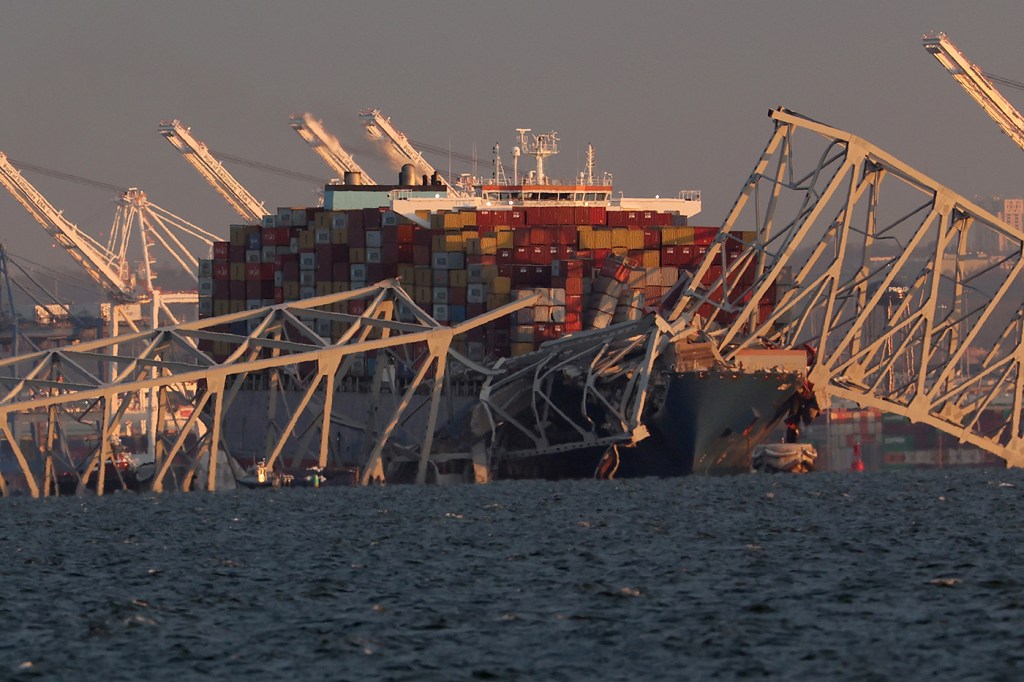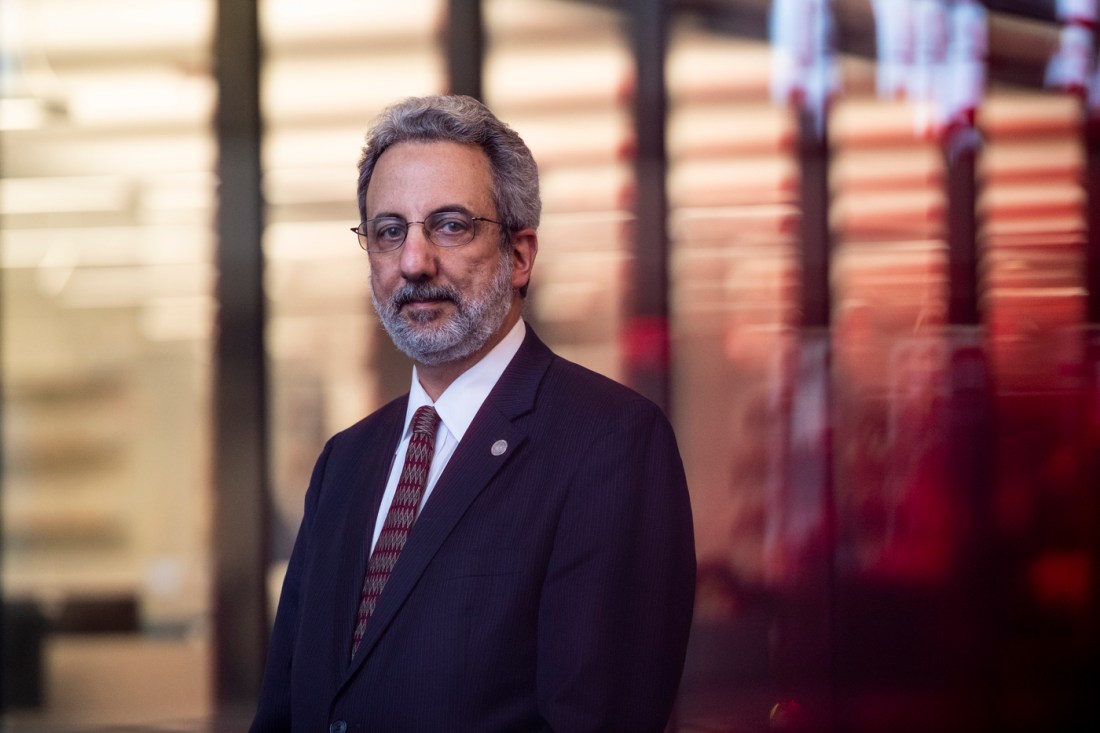
Northeastern professor Jerome Hajjar says the ship collision may have exceeded “the expected loads at the time of the bridge design.”

A major bridge in Baltimore collapsed Tuesday morning after it was struck by a container ship.
The catastrophic collapse sent cars plunging into the water, initiating a multi-agency emergency response involving state authorities, emergency personnel and the Coast Guard, reports say. Water rescues are underway.
Jerome Hajjar, the CDM Smith Professor of Civil and Environmental Engineering at Northeastern University, and current president of the Structural Engineering Institute of the American Society of Civil Engineers, says the collapse highlights how older bridge designs may not have anticipated the risks posed by commercial shipping vessels becoming larger in size over the years.
He says the bridge failure could have the result of a “mismatch between the size of the load,” or the force of the ship collision, and “the expected loads at the time of the bridge design.”
“This is a true tragedy,” Hajjar tells Northeastern Global News.
Video of the collapse showed a vessel colliding with a pillar of the bridge, which then appeared to give way and collapse into the water.
“The container ship must have significantly damaged the support structure, and a bridge of this span, if the support structure loses its or even displaces significantly, that could be enough to cause the bridge to fail,” Hajjar says. “And once that support structure goes, the distance to the next supports on either side are too far.”
Hajjar continues: “It’s possible that as the support failed, it was essentially pulling down the bridge as well. But even if the bridge had just been bearing on it, if that support structure starts to fail, and it permits the bridge to deflect down significantly — that’s enough to cause the failure.”

The steel-arched bridge, Francis Scott Key Bridge, a part of Interstate 695, was the second-longest continuous-truss bridge span in the world when built — and remains the third longest in the world, according to the American Society of Civil Engineers. It was completed in 1977.
The cargo ship is a Singapore-flagged vessel named Dali. According to the New York Times, the owners of the 948-foot-long ship said it struck a pillar of the bridge around 1:30 a.m., adding that no one on the ship was injured.
Hajjar said it’s hard to know if the bridge was structurally deficient. “It’s certainly possible that there was nothing deficient with the bridge — not when you take a force as large as a container ship and smash it into a support,” he says.
Hajjar says that commercial vessels, particularly in major ports, often navigate bridges of a similar length to the Francis Scott Key Bridge.
Hajjar says he can’t speak to the specifics of the design of the Francis Scott Key Bridge, but adds: “I would assume that they design these supports to be able to withstand some amount of sideways or lateral load like this.”
“And therefore I would also assume that this load was significantly higher than typical design loads,” he says.
The most common cause of bridge failure is a process called scouring, or when the soil around the bridge’s foundation erodes.
“If the bridge support had been getting scoured for years — meaning, as the water rushes by it, it degrades the soil conditions at the base of the support — then it’s possible that a lighter load could do this,” Hajjar says. “But that’s pretty tough to say because this was definitely a big load.”
As global demand for goods grows, Hajjar says commercial container ships have been getting larger over the years, leading to more navigational complexities and potential hazards.
“Normally, with a number of failures that occur particularly to bridges — it can be tied to aging infrastructure,” Hajjar says. “This one, however, that’s not necessarily the case. The mismatch between the size of the load and the expected loads at the time of the bridge design could be an important link.”
Hajjar adds: “Any collapse like this, the structural engineering community takes it really seriously. We investigate these down to the last detail, and sometimes that takes years.”
